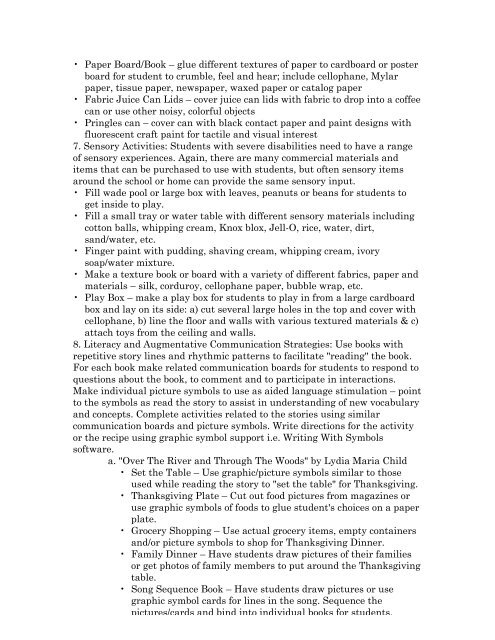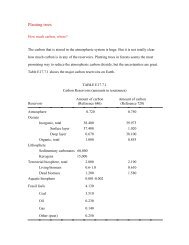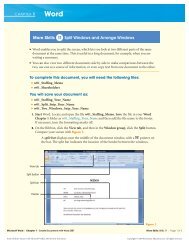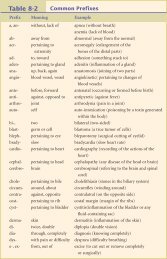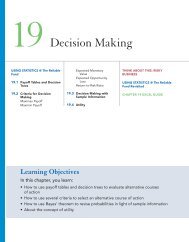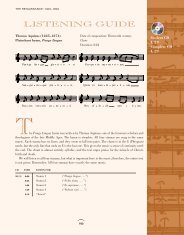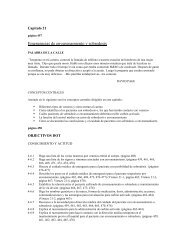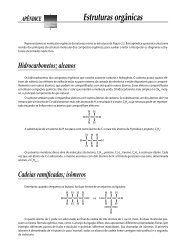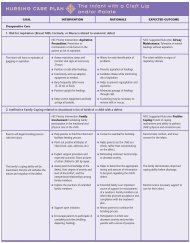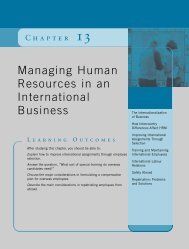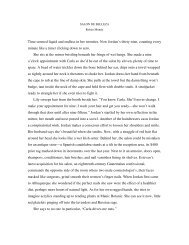WEBSITE ACTIVITIES DIANE K. ELLIS AAC CONSULTANT ...
WEBSITE ACTIVITIES DIANE K. ELLIS AAC CONSULTANT ...
WEBSITE ACTIVITIES DIANE K. ELLIS AAC CONSULTANT ...
You also want an ePaper? Increase the reach of your titles
YUMPU automatically turns print PDFs into web optimized ePapers that Google loves.
• Paper Board/Book – glue different textures of paper to cardboard or poster<br />
board for student to crumble, feel and hear; include cellophane, Mylar<br />
paper, tissue paper, newspaper, waxed paper or catalog paper<br />
• Fabric Juice Can Lids – cover juice can lids with fabric to drop into a coffee<br />
can or use other noisy, colorful objects<br />
• Pringles can – cover can with black contact paper and paint designs with<br />
fluorescent craft paint for tactile and visual interest<br />
7. Sensory Activities: Students with severe disabilities need to have a range<br />
of sensory experiences. Again, there are many commercial materials and<br />
items that can be purchased to use with students, but often sensory items<br />
around the school or home can provide the same sensory input.<br />
• Fill wade pool or large box with leaves, peanuts or beans for students to<br />
get inside to play.<br />
• Fill a small tray or water table with different sensory materials including<br />
cotton balls, whipping cream, Knox blox, Jell-O, rice, water, dirt,<br />
sand/water, etc.<br />
• Finger paint with pudding, shaving cream, whipping cream, ivory<br />
soap/water mixture.<br />
• Make a texture book or board with a variety of different fabrics, paper and<br />
materials – silk, corduroy, cellophane paper, bubble wrap, etc.<br />
• Play Box – make a play box for students to play in from a large cardboard<br />
box and lay on its side: a) cut several large holes in the top and cover with<br />
cellophane, b) line the floor and walls with various textured materials & c)<br />
attach toys from the ceiling and walls.<br />
8. Literacy and Augmentative Communication Strategies: Use books with<br />
repetitive story lines and rhythmic patterns to facilitate "reading" the book.<br />
For each book make related communication boards for students to respond to<br />
questions about the book, to comment and to participate in interactions.<br />
Make individual picture symbols to use as aided language stimulation – point<br />
to the symbols as read the story to assist in understanding of new vocabulary<br />
and concepts. Complete activities related to the stories using similar<br />
communication boards and picture symbols. Write directions for the activity<br />
or the recipe using graphic symbol support i.e. Writing With Symbols<br />
software.<br />
a. "Over The River and Through The Woods" by Lydia Maria Child<br />
• Set the Table – Use graphic/picture symbols similar to those<br />
used while reading the story to "set the table" for Thanksgiving.<br />
• Thanksgiving Plate – Cut out food pictures from magazines or<br />
use graphic symbols of foods to glue student's choices on a paper<br />
plate.<br />
• Grocery Shopping – Use actual grocery items, empty containers<br />
and/or picture symbols to shop for Thanksgiving Dinner.<br />
• Family Dinner – Have students draw pictures of their families<br />
or get photos of family members to put around the Thanksgiving<br />
table.<br />
• Song Sequence Book – Have students draw pictures or use<br />
graphic symbol cards for lines in the song. Sequence the<br />
pictures/cards and bind into individual books for students.


